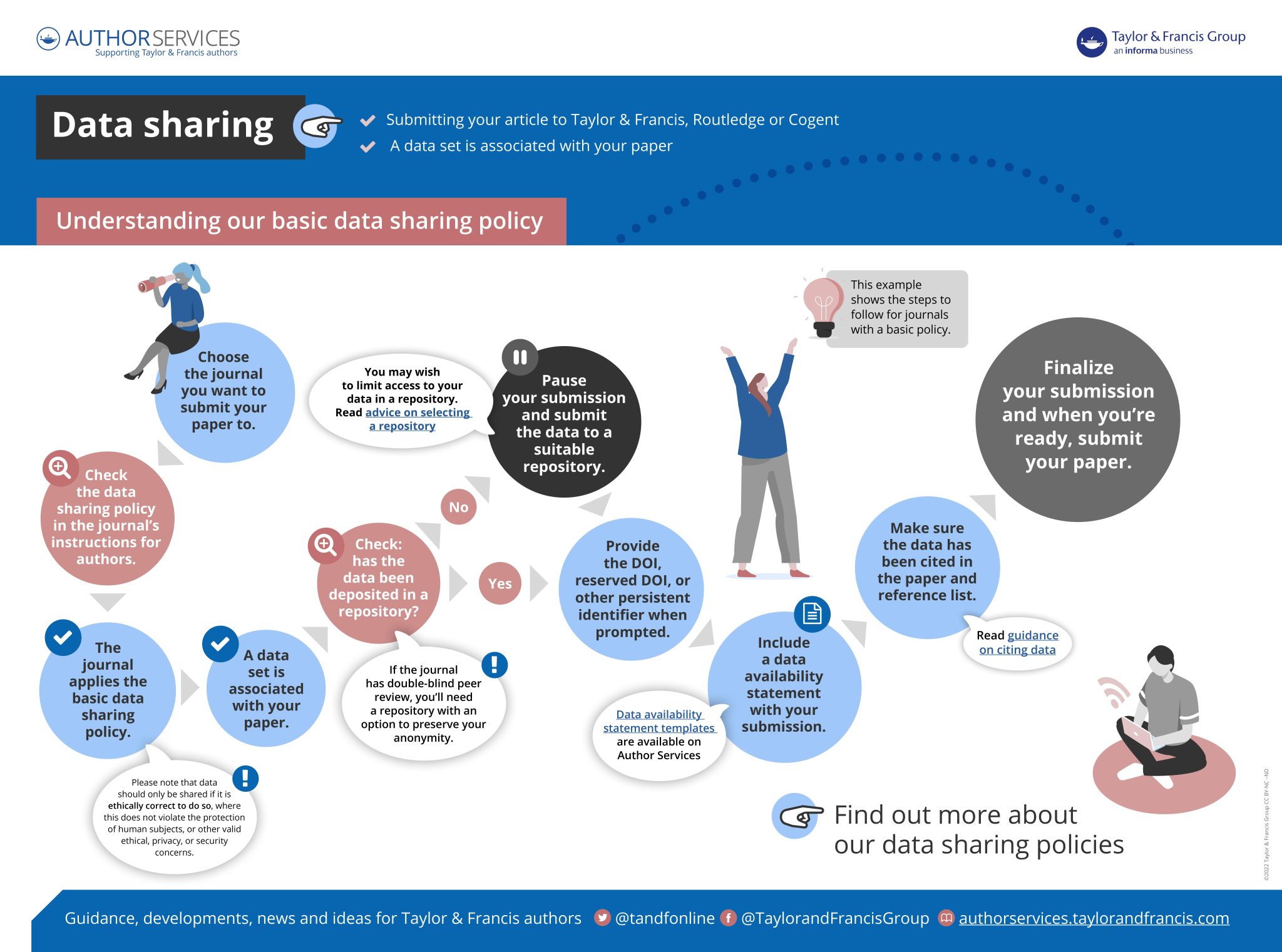Basic data sharing policy
Information for authors
Many Taylor & Francis journals have policies on data sharing which state how data associated with your article should be shared.
The following describes our basic data sharing policy. You’ll need to pay close attention to these instructions if you’re an author submitting to a journal with this policy.

Publishing tips, direct to your inbox
Expert tips and guidance on getting published and maximizing the impact of your research. Register now for weekly insights direct to your inbox.





